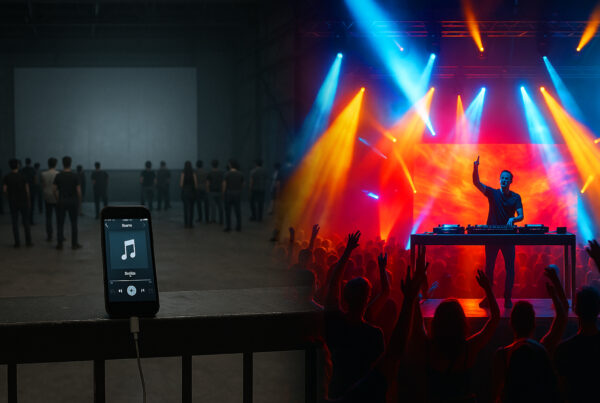
Videos are everywhere–from explainer videos to multimedia presentations, to recorded testimonials and video advertisements. The average person has multiple video streaming apps on their phone, allowing us to carry all our media throughout the day. And after a year of global shutdowns and lock-ins, we are even more dependent on quality videos.
So, it should come as no surprise that businesses are adopting more and more video marketing strategies. In general, the use of video on social media and other platforms leads to increased website traffic, more time spent on the company’s website, and better user engagement. Multimedia is no longer what separates good and excellent online marketing–it’s the innovative way marketing teams utilize videos to tell a story and interact with their audience.
In 2021, simply streaming product updates via TikTok will not cut it. With fierce competition for video ad space and the struggle to retain loyal viewers, businesses must get creative. If your company wants to stay ahead of the competition, your organization must excel at current video marketing trends.
The top 7 multimedia marketing trends
1. More Short-Form Videos
The rise of TikTok is indisputable. It is the fastest-growing media platform, jumping from 11 million monthly active users in 2018 to over 700 million monthly active users worldwide in 2020. Their secret is two-fold–the first, of course, being its short-form 60-second videos.
TikTok’s shorter videos are reminiscent of classic TV ads because they have a short time to provide information. Modern short-form videos must be fast-paced, energetic, visually appealing, and, above all, relatable.
2. More User Generated Content
The second part of TikTok’s success story (as it was for YouTube) is the collection of user-generated content, which allows the audience to participate in the creation process and inspire other users. Classic TV advertisements and infomercials talk at the viewer, cramming as much information about the product or service as possible within a relatively short time frame.
Modern company video ads (take the Geico and Progressive commercials, for example) aim to create a conversation and connection between the brand and its target audience. They are less about acquiring a one-time purchase and more about fostering long-lasting brand loyalty.
3. More Online Training and Educational Videos
Even before COVID-19 forced the nation’s schools online, the e-learning market was booming (think Kahn Academy or TED Talks). Unlike the traditional classroom setting, students can pause and replay explanations as often as they want. The videos are available to people worldwide at any time of day. Another benefit of virtual training and educational videos is that the teachers and instructors do not need to be real people. Animated videos can be much more dynamic and visually engaging. And animated charts or explanations can be much easier to understand. It’s really an individualized learning experience that adheres to individual schedules and learning styles.
In the corporate world, these videos can be used to market new releases, educate existing customers on usage, onboard new employees, and train partnering organizations. In the marketing world, explainer videos help make product adoption easier and sway new customers to purchase.
4. More AR Content
Considering the rising popularity of augmented reality (AR) and virtual reality (VR), you might want to consider incorporating AR/VR elements into your video marketing strategy.
Retail brands like IKEA and Warby Parker are already embracing augmented reality apps, allowing shoppers to test new furniture and clothing before purchasing. The AR system is paying off. Forbes estimates that 40% of customers will pay more for a product if they can see it first through AR/VR. That was before the pandemic temporarily shut down most in-person shopping centers.
Including AR elements in your multimedia marketing helps connect potential customers more directly with your product or service while explaining how best to use it.
5. More Shoppable Videos
Shoppable videos, like AR/VR videos, provide an interactive multimedia experience. Viewers can purchase the items being advertised in a video directly from the video–cutting out the website entirely. This makes purchasing a lot faster and easier. Like educational videos and AR shopping apps, viewers get a better sense for how the product can be used and what it will look like before purchasing.
The engagement rates of shoppable videos have already surpassed those of traditional display advertising as more and more e-commerce brands adopt this streamlined strategy.
6. More Virtual Events
This should be no surprise, given Zoom’s or Microsoft Teams’ omnipresence in every company. Even as restrictions and mask mandates are lifted, many events will likely continue virtually.
Virtual events save on travel expenses and accommodation expenses and make it easier for international attendees to join and glean information. Crucially, they also provide a new platform for multimedia marketing opportunities where participants can engage directly with the content.
New tools and platforms are helping companies escape the webinar mentality and create engaging experiences. Combined with creative content and value-driven messaging, virtual events could be your next major marketing platform and your ticket to reaching a new audience.
7. More Localization Required
With great multimedia production comes great localization requirements. Broadcasting to a global audience is easier than ever, but unless your content resonates across multiple languages and cultures, that global audience will remain underutilized.
The MediaLocate team is built from veteran localization industry professionals who are language and cross-cultural business communication experts. We know that global outreach is vital, and every company has a unique message. That’s why our voiceover, subtitle, transcription, and localized content creation services are tailored to your multimedia marketing needs.
Summary
The language of traditional commercials is obsolete. Anything resembling the stereotypical advertisement (hypothetical questions, “buy now!” and keyword clickbait) are automatically ignored.
The marketing strategies that succeed will focus on crafting engaging, dynamic, relatable, personalized content that prioritizes long-term relationships over a quick sale.
For more information on multimedia marketing strategies and content localization, contact [email protected] or call 1-800-776-0857.











